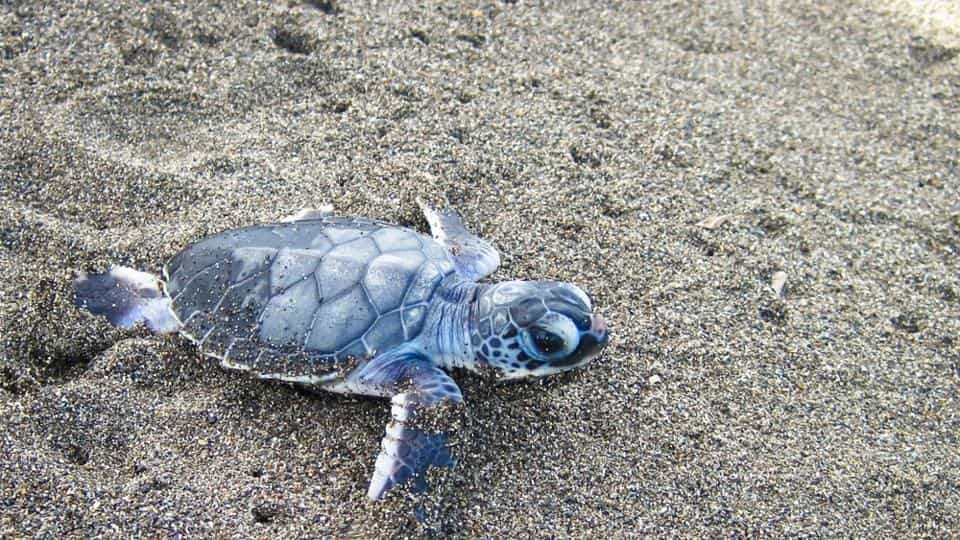
Ron and I had the most amazing experience the other week! I mentioned to our dear friend, Gabriela, that we had never witnessed the release of baby turtles here in Baja. She cleared her calendar and took us out to San Cristobal Ranch in the late afternoon to ensure that situation was remedied and that we had a hands-on education as to the work they are doing on their property.
Her husband, Rene, owns the land and is the President of a non-profit organization called Asupmatoma, which started their environmental protection back in the early 1990’s. The organization was formalized as a marine turtle center in 1995 and they focus their efforts on protection and conservation of marine turtles.
In addition to the protection and conservation aspects of the work that Asupmatoma is doing, their vision is to promote and increase the active participation and technical training for the local and foreign communities. They have one full-time biologist on staff, and dedicated volunteers come to work on the project from Mexico and far beyond.
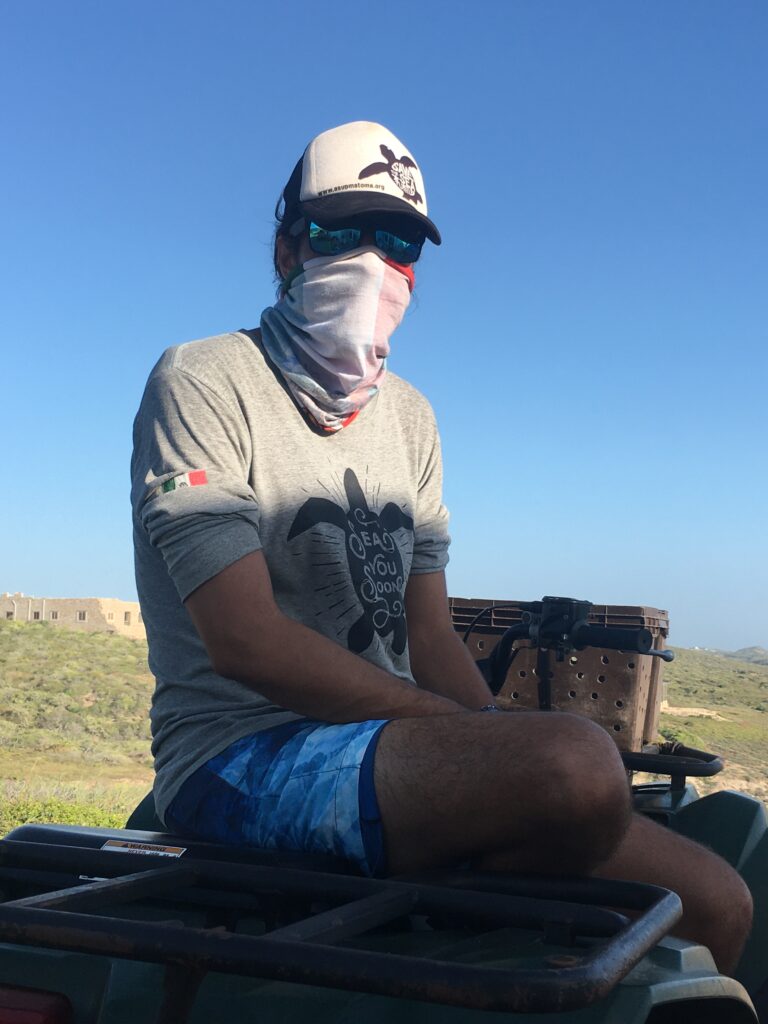
The Sea of Cortez and Baja California are home to five species of sea turtles (there are only eight in the world!): Hawksbill, Loggerhead, Leatherback, Green and Olive Ridley – all of which are endangered. It is believed that each mother turtle returns to lay her eggs on the same beach where, at least a decade before, she was born. The males, on the contrary, never set foot on land again and live their entire lives in the ocean.
Under the cover of night, the females leave the sea and search for a place on the beach where they were born (an absolute miracle they are able to find their birthplace!) to lay their eggs. With their powerful fins, they dig holes in the sand and make a nest into which they lay up to 150 eggs, one by one. Once the eggs are deposited, the turtles cover their nests with sand, erasing their trace, and return to the sea.
The team at Asupmatoma patrol the miles of beach to spot the mothers or find their tracks to the nests where they lay their eggs. The eggs are moved to incubation areas to protect them from man, predatory animals, and natural phenomena (Rene and Gabriela recounted moving the incubation nests during one hurricane to protect the turtle eggs!). Each new nest is carefully marked to show the species, when the eggs were laid, how many eggs were moved, etc. which makes it almost appear like a little cemetery and not a birthplace.
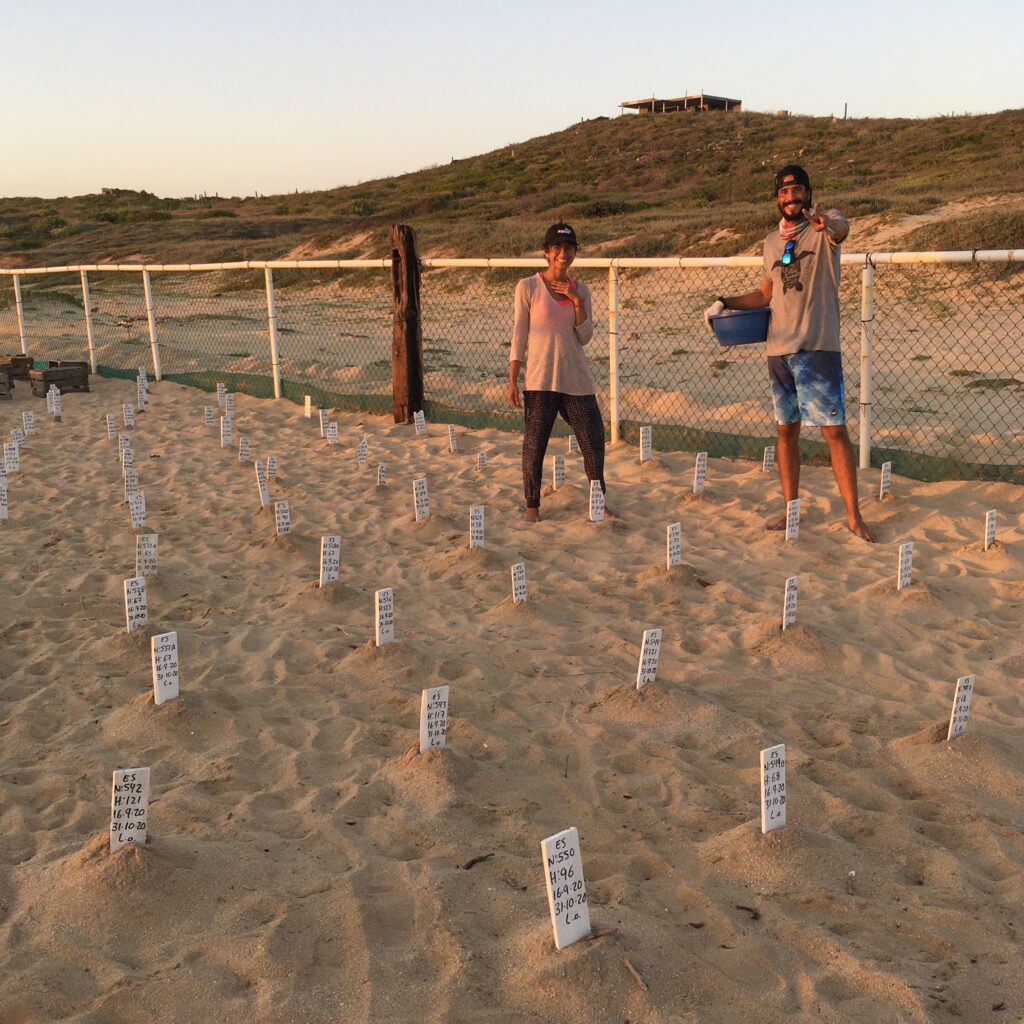
After 45 days or so, depending on the species, the baby turtles begin their difficult struggle for life. Still in the nest, buried a foot to two feet under the surface of the sand, they emerge from their shells one by one. Then, they crawl to the surface and begin their trek to the sea to begin the next phase of their lives.
We got to be part of the “cleaning” of the nests the day we visited. The vast majority of the babies made their way to the surface and had been released earlier in the day, but some did not. Our job was to carefully dig out the nests and find any babies that were still alive, and clean out the broken eggs and dead turtles that didn’t make it. I can’t tell you how exciting it is to find a baby and feel it wiggling in your hand! With a “Hi guy, welcome to the world!”, I found fifteen in my nest and Ron found three.
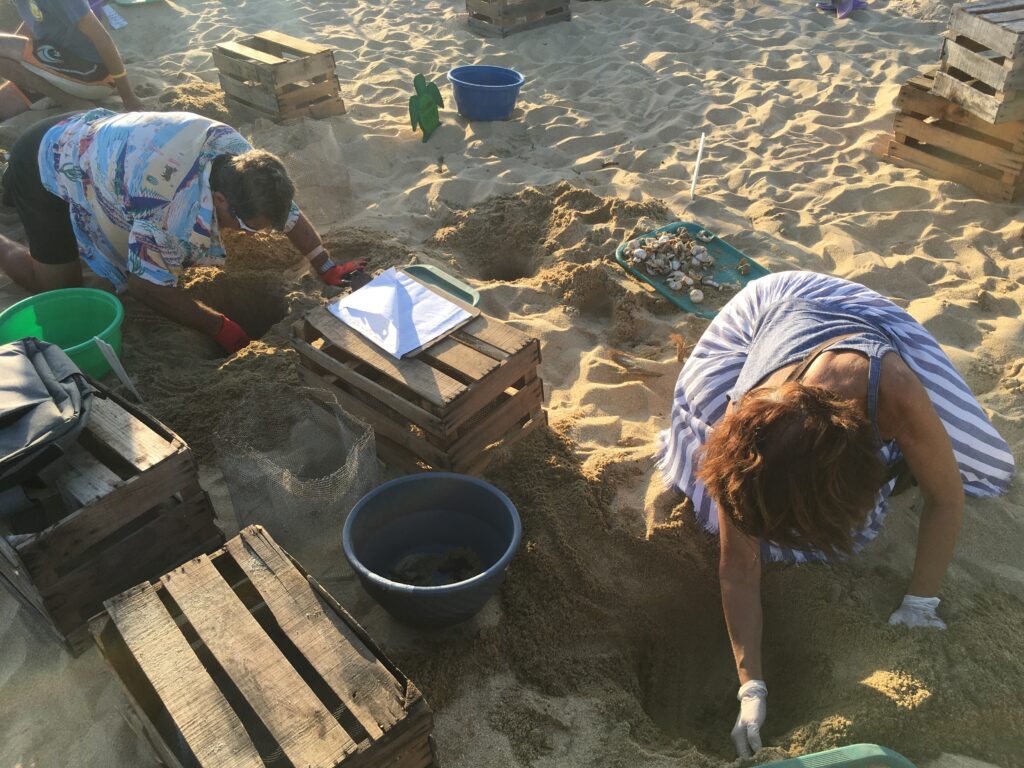
Because these little fellows hadn’t crawled up to the surface themselves, it was important to let them move around in the plastic container we put them in to get them strong and to “imprint” them as to their surroundings so the females could find their way back to lay their eggs in a decade or so (amazing!).
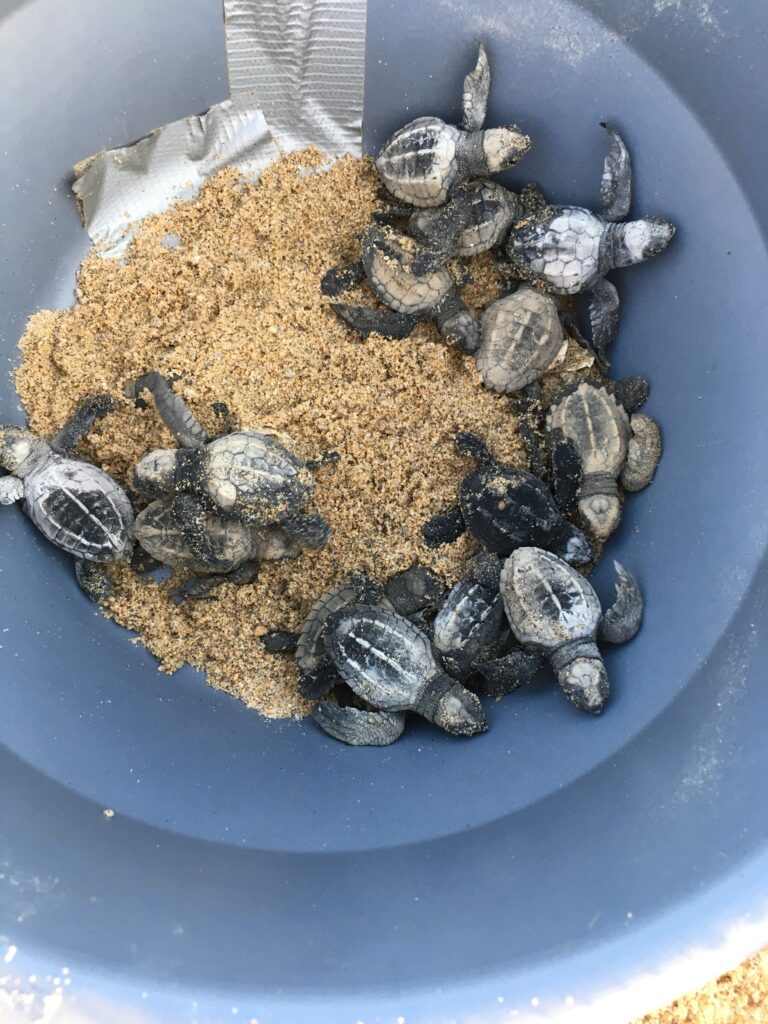
After a half-hour or so, we took the babies we’d found to the shore and released them so that they could hurry to the sea to begin their new life.
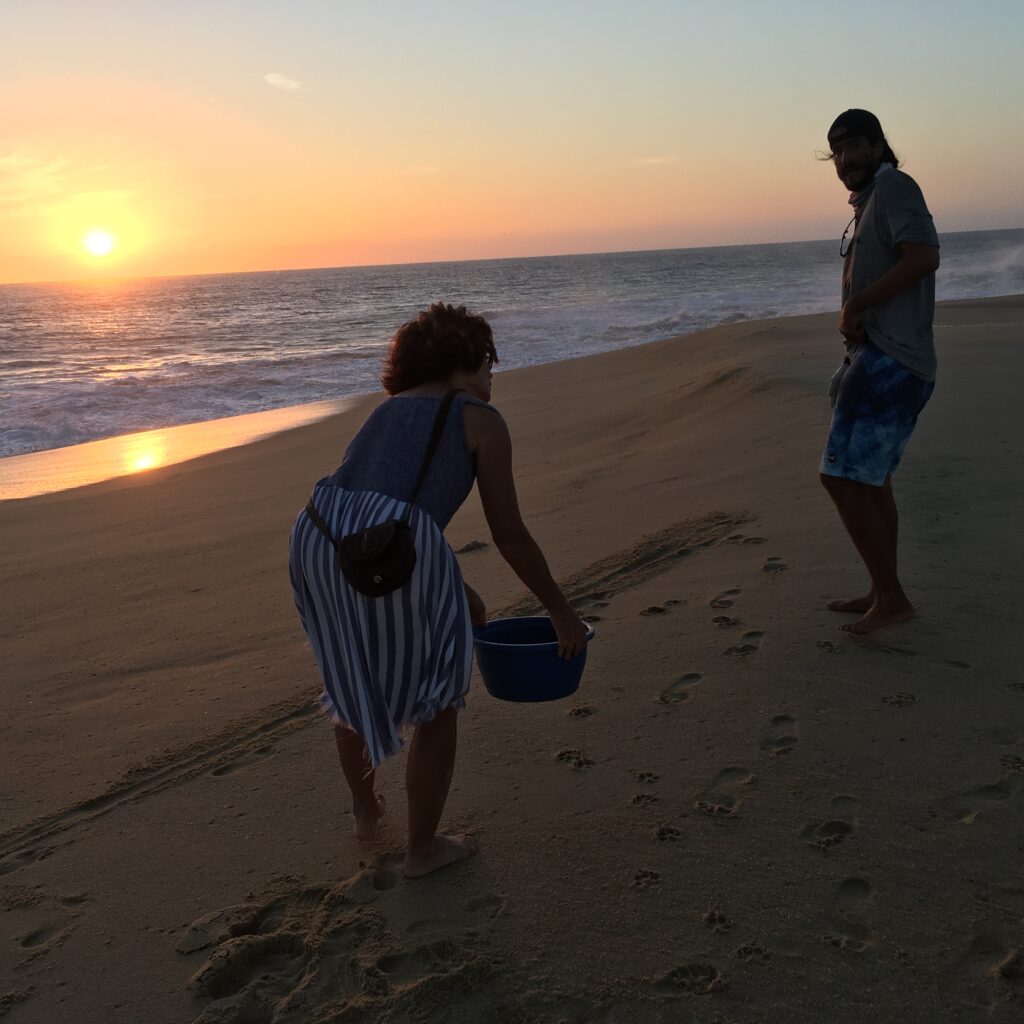
It’s a miracle that they’ve made it this far, but even more incredible to realize that of one thousand baby turtles, probabilities predict that only one will reach adulthood. Good luck and God speed, little ones! You are truly a miracle and we feel honored to have witnessed a small part of it.
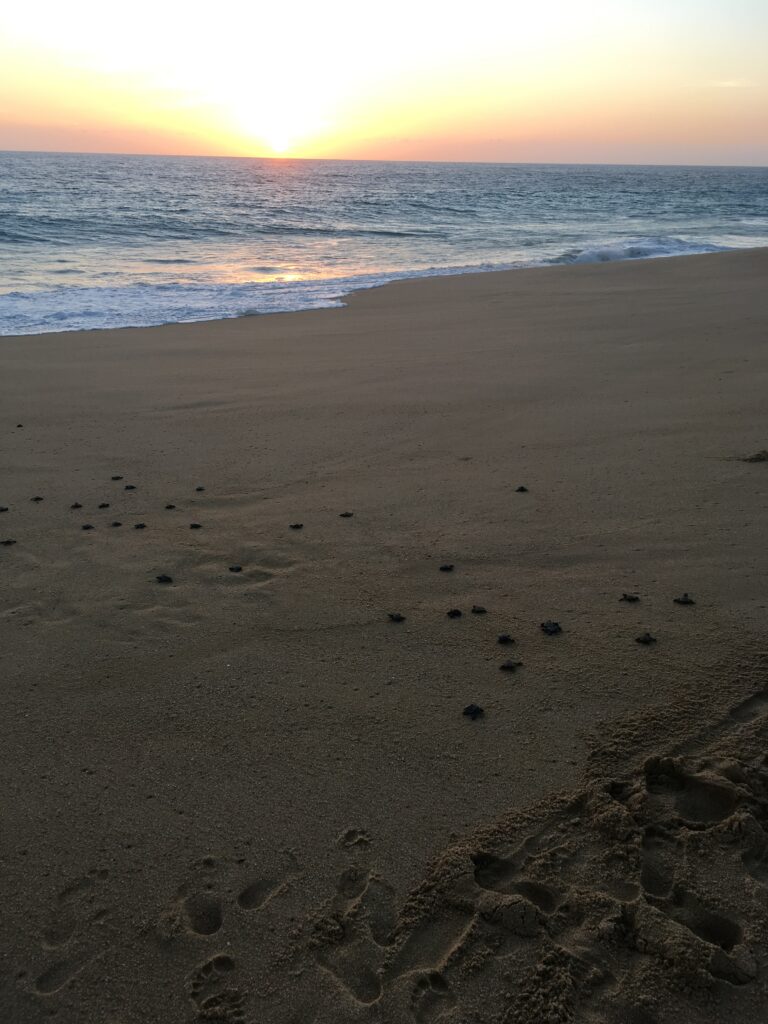
To learn more about Asupmatoma, how you can participate or to donate to the important work they are doing, please contact asupmatoma@hotmail.com or visit their website at www.asupmatoma.org/en/.

